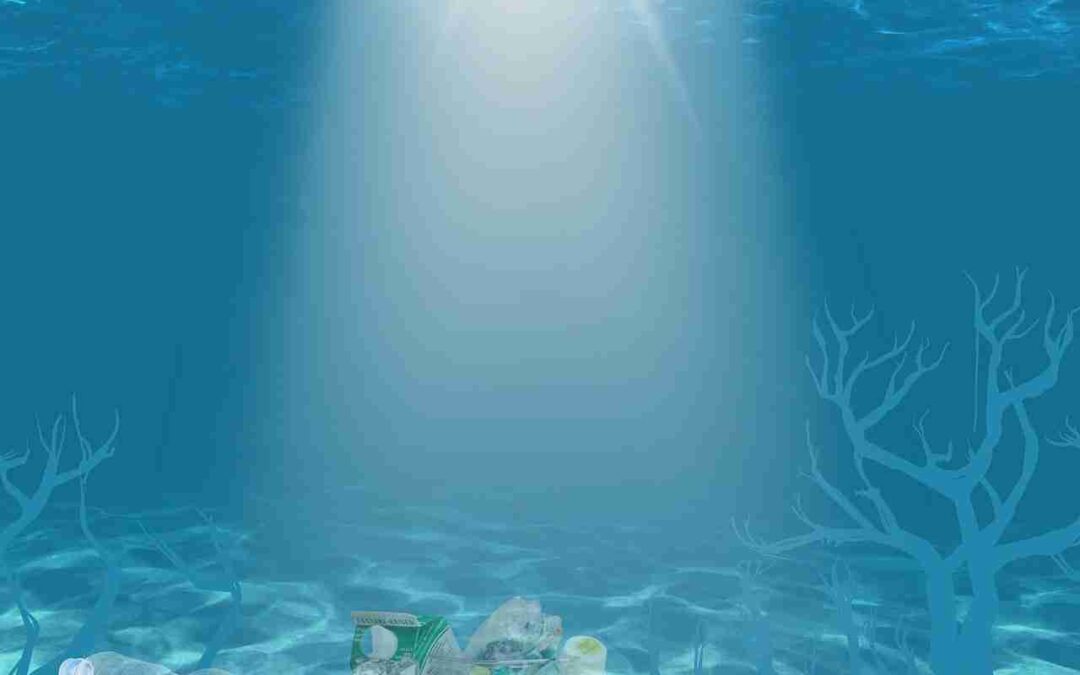Journeys to the Depths of the Ocean
I’m fairly new to the study of plastics, but after reading Susan Casey’s book, The Underworld: Journeys to the Depths of the Ocean, in which she describes fish living at incredible depths already visibly filled with microplastics, I had to learn more. As many of you know, plastics, both large and small, are dumped into our waterways on a daily basis. Sea creatures choke on plastics that mimic natural prey. Seabirds choke on plastic items that mimic food. We see images of the by-catch (unwanted fish, dolphins, turtles, etc.) caught in fishing line – whether in use or discarded. The images are distressing, and we are touched, as we should be, by seeing videos of divers freeing entangled sea-creatures. Though far too often, we don’t see the carnage.
Even more alarming, we don’t see the penetration of microplastics into our food chain. Microplastics are directly manufactured and used in a variety of products but they also result from degradation of macro-plastics. These plastic particles, originally classified as under 5 mm in size, need special research techniques to be identified and quantified.
80% of the plastics in the ocean are estimated to originate from land via dumping and tidal wash. Increasing plastic manufacturing with resultant waste and pollution will only worsen the problem. Some plastics remain on the ocean’s surface, but others sink to the very depths. Despite additives to reduce oxidation, over time certain types of buoyant plastics get oxidized by the sun and atmospheric oxygen, changing their buoyancy. The hadal and abyssmal zones (you can guess where they get their names!) become the place where sinking plastics travel.
Initially I, like many other laypeople, thought, “Well, plastics are fairly inert– they don’t provide nutrition, but they don’t DO anything.” Wrong! It didn’t take but a little bit more reading to understand that most plastics have a variety of additives, many of which are toxic, and many others haven’t been tested for potential toxicity. These additives leach out of the plastic’s chemical backbone over time and are anything but inert. We learned that ones we thought were harmless were actually quite toxic – but only after using them for decades. In addition, even without leaching additives, microplastics on the seafloor promote abnormal bacterial coatings, which reduce the remaining oxygen for other creatures at depth.
Microplastics, when ingested by small organisms, may cause intestinal blockage or give the organism a false satiety signal–leading to starvation. Tiny bits of plastic can migrate out of the gut and into tissues. The full ramifications are unclear, but we’re upsetting a significant part of the ocean’s ecosystem, and the consequences could be difficult and costly in terms of lives and money to counter. It’s a Herculean effort to study the effects of microplastics due to their incredible diversity of chemical composition, degree of oxidation, size, and the variety of organisms exposed to them at varying concentrations. Some of the study locations (and their depths) are extremely challenging.
In future articles, we’ll delve into these issues further, and I will provide some references for further reading. I will also note some of the organizations that are working to address the plastics problem.
Howard Homler MD, FACP

